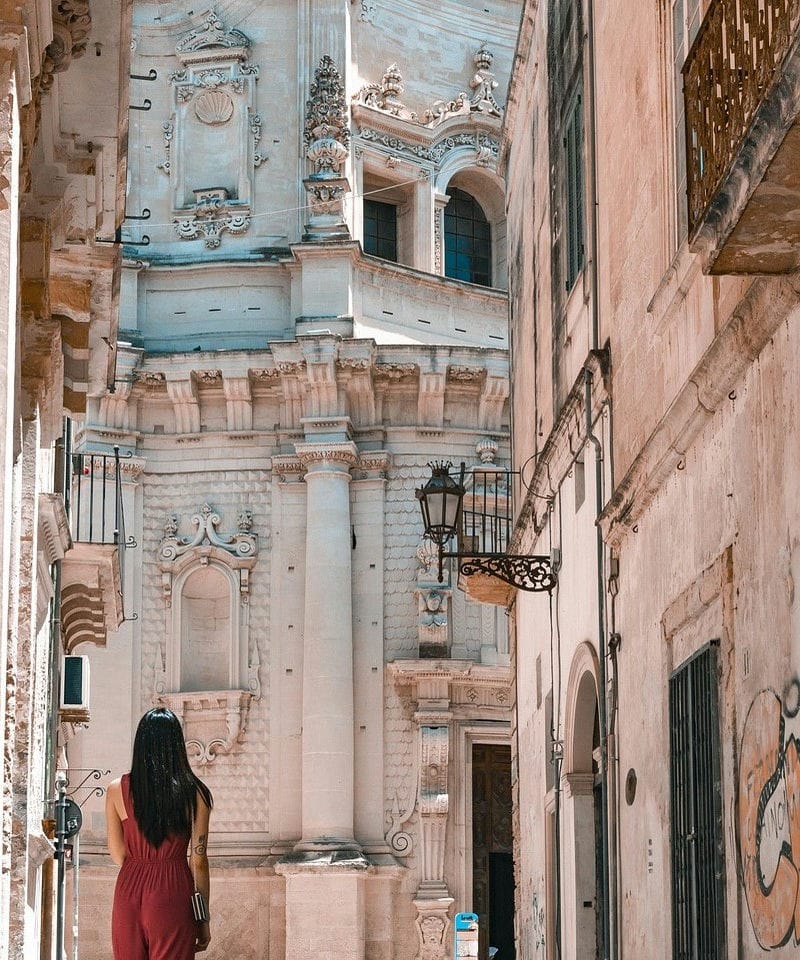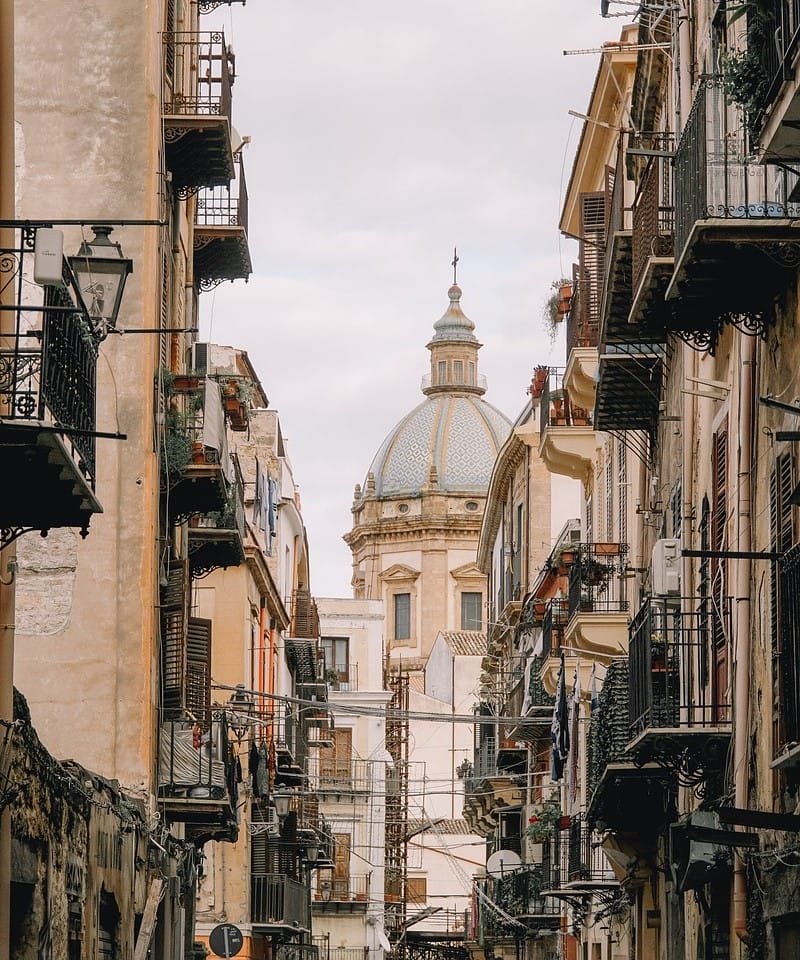
Things to Do in Rome: Top Sites and Activities
Key Takeaways
- There are plenty of things to do in Rome in addition to the usual touristy must-dos
- Colosseum and Roman Forum as central historic sites
- Vatican City's St. Peter's Basilica and Sistine Chapel as art highlights
- Authentic Roman cuisine and Trastevere's charm

Rome, often called the Eternal City, captivates with its blend of ancient history and vibrant modern culture.
From its majestic ruins to its exquisite cuisine, visitors are spoiled for choice with things to do.
It is not a coincidence that many couples choose Rome as their honeymoon destination, leaving right after their first taste of wedding cake.
The Colosseum and the Roman Forum transport you back in time, showcasing the grandeur of Rome's imperial past.
Beyond its historical allure, Rome offers a rich tapestry of art and nature.
Marvel at the wonders of Vatican City, where St. Peter's Basilica and the Sistine Chapel stand as testaments to the city's artistic heritage.
Piazzas and fountains scattered throughout Rome provide charming spots to relax and soak in the atmosphere.
Finally, no trip to Rome is complete without indulging in its culinary delights.
Feast on authentic Roman flavors in cozy trattorias, and embrace the local lifestyle in the vibrant neighborhood of Trastevere.
Whether it's your first visit or you're returning, Rome always has something new and exciting to offer.
Explore the Colosseum

The Colosseum is one of Rome's most iconic landmarks, offering a profound glimpse into Ancient Roman history and architecture.
Visitors can explore various features, including the arena floor and upper levels, and should plan their visit wisely to make the most of this ancient amphitheater.
History and Significance
The Colosseum, also known as the Flavian Amphitheater, was commissioned in AD 70-72 by Emperor Vespasian.
It is an architectural marvel of Ancient Rome, built to host gladiatorial contests, animal hunts, and public spectacles.
This amphitheater could accommodate up to 80,000 spectators and symbolizes the grandeur of Roman engineering.
The Colosseum was used actively for nearly 500 years. Although it fell into ruin, renovation work has helped preserve its structure. Today, it stands as a testament to Roman architectural prowess and societal customs.
Tips for Visiting
When visiting the Colosseum, make sure to be prepared.
The site is primarily open-air, so bring a hat and sunscreen to protect against the sun.
Water is essential, especially in the summer heat.
Wear comfortable walking shoes, as the terrain can be uneven.
Special access tours can provide entry to the arena floor and upper levels, which are otherwise restricted.
Opt for early morning or late afternoon visits to avoid the midday crowd.
Purchasing tickets in advance or booking a guided tour can also save time and enhance the experience.
Best Times to Visit
To enjoy a more pleasant visit, consider the season and time of day.
Spring (April to June) and fall (September to October) offer milder weather and fewer tourists.
Early mornings, right when the Colosseum opens, or late afternoons about two hours before closing are ideal times to visit.
These periods typically have fewer crowds and allow for a more intimate exploration of the amphitheater.
Also, note that the first Sunday of each month traditionally offers free entry, although this policy has seen changes recently, so check current guidelines before planning your visit.
Visit the Roman Forum and Palatine Hill

The Roman Forum and Palatine Hill are must-see tourist attractions in Rome, offering rich historical insights and impressive archaeological remains.
These sites provide a glimpse into ancient Rome’s grandeur and the daily lives of its citizens.
Importance in Ancient Rome
The Roman Forum served as the heart of ancient Rome, functioning as a political, commercial, and social hub. Major government buildings, including the Senate House, were located here.
The Forum was integral for public speeches, criminal trials, and gladiatorial matches.
Palatine Hill, situated above the Forum, is where Rome’s elite, including emperors, built their residences. It holds great mythological and historical significance as the supposed founding site of Rome by Romulus.
Key Structures to See
The Temple of Saturn, one of Rome’s oldest temples, held the city's treasury.
The Arch of Septimius Severus is a stunning monument celebrating Roman victories.
The Via Sacra or Sacred Road, the main street, hosted triumphal processions.
Palatine Hill features the Palace of Domitian, which provided luxurious living quarters for emperors, and the Hut of Romulus, marking the legendary founder's home.
Nero's Golden House
The Domus Aurea, or Nero's Golden House, is also an incredible ancient site located in Rome, Italy.
It was built by the Roman Emperor Nero after the Great Fire of Rome in AD 64.
The site of the Domus Aurea covers a significant area that spans parts of the Esquiline, Caelian, and Palatine Hills in Rome.
Today, visitors can explore some of the remains of the Domus Aurea through guided tours organized by the Colosseum Archaeological Park.
These tours offer a fascinating glimpse into the lavish palace complex that once stood as a symbol of Nero's wealth and power during ancient Rome.
Guided Tours
Visitors can explore these sites through guided tours or self-guided options.
Guided tours often provide skip-the-line tickets and access to restricted areas, such as the Colosseum's arena floor. Tours generally include small groups, ensuring a personalized experience.
Alternatively, self-guided tours allow for flexible exploration. Maps and audio guides are available, helping visitors to navigate and learn at their own pace.
Whether you choose a guided tour or a self-guided approach, both options offer unique and enriching experiences at these historically significant sites.
Marvel at the Vatican City Wonders

Home to stunning art and rich history, Vatican City is a significant destination in Rome.
Key highlights include the Vatican Museums, the Sistine Chapel, and St. Peter's Basilica.
Discover the Vatican Museums and the Sistine Chapel
The Vatican Museums house one of the world's most impressive art collections.
Spanning centuries, the collections feature works from ancient Egypt, classical sculpture, Renaissance art, and contemporary pieces.
Michelangelo's Sistine Chapel ceiling and The Last Judgement fresco are the pivotal Rome attractions here.
Tip: To avoid the crowds, opt for Skip-The-Line Tickets.
Visitors should note that a dress code is enforced: Knees and shoulders must be covered to enter.
Expect to spend several hours here to truly appreciate the breadth of the collection.
Climb St. Peter’s Basilica
St. Peter's Basilica, a cornerstone of the Roman Catholic Church, is both a spiritual and architectural wonder.
By climbing to the top of its dome, designed by Michelangelo, visitors are rewarded with a panoramic view of Rome and Vatican City.
Important: There is a strict dress code for entry. Ensure that clothing covers shoulders and knees.
Inside, highlights include Michelangelo’s Pietà, Bernini's Baldachin, and the tombs of several Popes.
Booking a guided tour can enhance the experience by providing deeper insights into the history and art of the Basilica.
Uncover the Treasures of Art and Nature

Rome captivates visitors with its blend of magnificent art and lush gardens, showcasing masterpieces and offering serene escapes from the bustling city.
Explore the Borghese Gallery and Gardens
The Galleria Borghese, nestled in the Villa Borghese gardens, is a treasure trove of Renaissance and Baroque art.
It houses works by Bernini, Raphael, and Caravaggio. Bernini's sculptures like 'Apollo and Daphne' and Caravaggio's intense paintings are highlights.
Outside, the expansive gardens offer peaceful pathways, fountains, and statues.
The villa's architecture complements its natural beauty, creating a tranquil oasis.
Visitors can rent bikes or take leisurely walks to enjoy the verdant surroundings.
Admire the Art in Villa Farnesina and Centrale Montemartini
Villa Farnesina, a Renaissance villa in Trastevere, showcases frescoes by Raphael.
The 'Loggia of Cupid and Psyche' is particularly captivating with its mythological themes and intricate details. The villa's architecture and ornate decorations add to its allure.
Centrale Montemartini combines ancient Roman sculptures with early 20th-century industrial architecture.
Located in a former power plant, it offers a unique juxtaposition of art and machinery.
Key pieces include marble statues and intricate mosaics, providing a fascinating journey through history.
Relish the Charm of Rome's Piazzas and Fountains

Exploring Rome’s piazzas and fountains offers a glimpse into the city’s rich history and vibrant ambiance.
From wishing at the Trevi Fountain to soaking up the atmosphere in Piazza Navona, these iconic spots are a must-visit.
Make a Wish at the Trevi Fountain
The Trevi Fountain is one of the most famous fountains in the world.
Visitors can toss a coin over their shoulder to ensure a return to Rome.
Designed by Nicola Salvi and completed by Giuseppe Pannini, the fountain features a majestic sculpture of Neptune, the god of the sea.
Surrounded by intricate carvings and flowing water, the fountain is not just an architectural masterpiece but also a symbol of hope and romance.
Crowds gather day and night to admire its baroque beauty and partake in the age-old tradition of coin tossing.
Nearby, various cafes and gelaterias offer a perfect spot to relax and enjoy the view.
Soak Up the Atmosphere in Piazza Navona
Piazza Navona stands out with its vibrant atmosphere and historical significance.
This elliptical square, built on the site of the ancient Stadium of Domitian, is famed for its three lavish fountains.
The most prominent is the Fountain of the Four Rivers, a creation of Gian Lorenzo Bernini, showcasing personifications of four major rivers.
Lined with baroque palaces, the square also features the Church of Sant'Agnese in Agone, which adds to its architectural splendor.
Street artists, cafes, and markets bring the piazza to life, making it an engaging spot for both locals and tourists.
The festive ambiance, especially during events and holidays, encapsulates the spirit of la dolce vita, inviting everyone to experience the heart of Rome.
Admire Piazza Del Popolo
Piazza del Popolo is a large urban square in Rome, Italy. The name translates to "People's Square," but it historically refers to the poplars (popolo in Italian) that once adorned the area.
The square is situated at the northern gate of the Aurelian Walls, which was the main entrance to Rome during the Roman Empire. It marks the beginning of Via Flaminia, an important ancient Roman road.
At the center of the square stands the Flaminian Obelisk, a 24-meter high Egyptian obelisk originally brought to Rome in 10 BC by Emperor Augustus from Heliopolis. It was installed in the square by Pope Sixtus V in 1589.
The square is flanked by two nearly identical Baroque churches, Santa Maria dei Miracoli and Santa Maria in Montesanto, which were commissioned in the 17th century by Pope Alexander VII. These churches create a grand entrance to Via del Corso.
Located on the northeast corner of the square, this Renaissance church is renowned for its art and architecture, including works by Caravaggio, Raphael, and Bernini.
The current neoclassical design of the square was executed by architect Giuseppe Valadier in the early 19th century. Valadier's plan included symmetrical elliptical shapes, gardens, and the creation of a unified urban space.
The square is also dominated by the grand Porta del Popolo, a gate built by Bernini for Pope Alexander VII in the 17th century. This gate was historically the main northern entrance to the city.
Piazza del Popolo has been a gathering place for public events, celebrations, and protests throughout its history.
Today, it remains a popular tourist attraction and a significant cultural and historical landmark in Rome.
Feast on Authentic Roman Flavors

Immerse yourself in the culinary delights of Rome by savoring its traditional dishes, exploring vibrant food markets, and embarking on guided food tours.
This journey through the heart of Roman cuisine will leave you with unforgettable flavors and a deeper appreciation for Italy's rich gastronomic heritage.
Taste the Local Delicacies
Rome boasts a variety of iconic dishes.
Cacio e pepe, a simple yet flavorful pasta made with just cheese and pepper, is a must-try.
For a heartier option, try gricia or carbonara, both featuring rich, savory ingredients like pecorino cheese and guanciale.
Pizza al taglio, Roman-style slice pizza, offers a quick, delicious bite.
Also, don't miss out on local pastries such as maritozzi, and fluffy buns filled with whipped cream.
Gelato here is unlike anywhere else, with flavors focusing on fresh ingredients, resulting in a creamy, indulgent treat.
Experience the Food Markets
Rome's markets are a feast for the senses.
Testaccio Market is renowned for its fresh produce, meats, and cheeses, providing an authentic experience of Roman daily life.
Stroll through the colorful stalls and sample porchetta, a succulent, herb-roasted pork.
The vendors are knowledgeable and often happy to share cooking tips and tricks.
For seafood lovers, Campo de' Fiori Market offers a variety of fresh fish and shellfish.
Each market presents an opportunity to discover new ingredients and culinary inspirations.
Join a Food Tour
Joining a food tour is an excellent way to experience the best of Roman cuisine.
Local experts lead these tours, guiding you through the city's best eateries and hidden gems.
Participants often get to taste a range of dishes, from street food to gourmet offerings.
Some tours focus on specific neighborhoods, like Trastevere or Testaccio, allowing for a deep dive into the culinary culture of these areas.
They can often even take you to a wine bar to taste Italy's wine selection.
This immersive experience is perfect for food lovers who want to learn more about Roman gastronomy.
Embrace the Roman Lifestyle in Trastevere

Nestled across the Tiber River, Trastevere exudes the charm of ancient Rome through its cobblestone streets and historic sites.
Visitors can explore hidden gems, immerse themselves in local culture, and enjoy a vibrant nightlife.
Overview of the Neighborhood
Trastevere, one of Rome’s most picturesque neighborhoods in the city center, is known for its narrow streets, historic churches, and vibrant squares.
Historically a hub for fishermen and sailors, it retains much of its old-world charm. As a result, visiting it is a must among the things to do in Rome.
The Basilica of Santa Maria in Trastevere, dating back to the 3rd century, stands as a testament to the neighborhood's rich history.
The area is also home to numerous small boutiques, cafes, and trattorias that offer authentic Roman cuisine.
Discover Hidden Gems
Beyond the popular attractions, Trastevere is full of hidden gems waiting to be explored.
The Orto Botanico, Rome’s botanical gardens, offers a peaceful retreat from the bustling city streets.
Visitors can wander through lush greenery and discover a variety of rare plants.
Another hidden treasure is the Villa Farnesina, a Renaissance villa adorned with exquisite frescoes by Raphael.
Additionally, the picturesque Ponte Sisto bridge provides stunning views of both the neighborhood and the Tiber River, particularly at sunset.
Enjoy the Nightlife
Trastevere comes alive at night with a dynamic and diverse nightlife scene.
The neighborhood boasts numerous bars and pubs ranging from traditional Italian enotecas to modern cocktail bars.
Popular spots include Bar San Calisto, known for its laid-back atmosphere and affordable drinks, and Freni e Frizioni, offering creative cocktails in a trendy setting.
For those looking to experience live music, Big Mama, a renowned jazz club, features local and international artists.
The vibrant piazzas serve as social hubs where people gather to enjoy the lively ambiance under the night sky.
Explore Trastevere to embrace an authentic Roman experience, whether strolling down its historic streets, uncovering hidden gems, or engaging in its vibrant nightlife.
Final Thoughts

As you plan your visit to Rome, it invites you to embark on an unforgettable journey through history, art, and culture.
From exploring iconic landmarks like the Colosseum and Vatican City to wandering through charming piazzas and savoring authentic Roman cuisine, every moment in Rome promises to be filled with wonder and discovery.
Whether you're a first-time visitor or returning to delve deeper into its treasures, Rome offers something magical for everyone.
Immerse yourself in the timeless beauty of ancient ruins and Renaissance masterpieces, then unwind in lively neighborhoods like Trastevere, where every cobblestone street tells a story.
As you stroll along the Tiber River, climb the Spanish Steps in Piazza di Spagna, or toss a coin into the famous fountain in Piazza di Trevi, let the city's vibrant atmosphere embrace you.
With its blend of rich history, delectable food, and warm hospitality, Rome welcomes you to create memories that will last a lifetime.
Embrace the spirit of la dolce vita and let Rome captivate your heart with its irresistible charm and endless delights!












